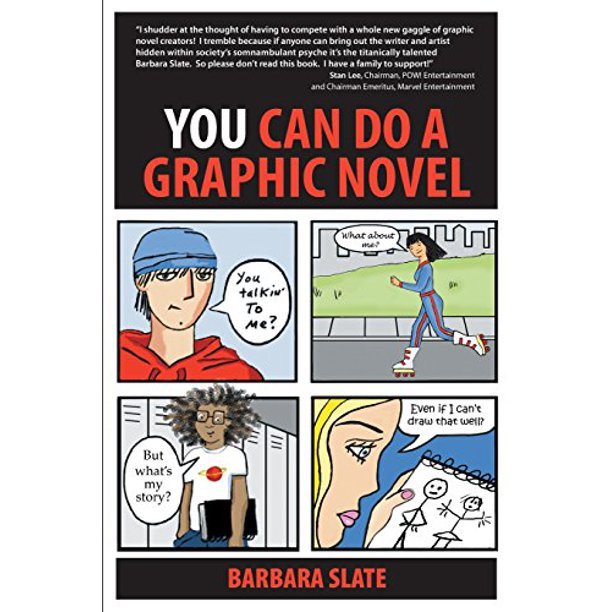Graphic novel resources: You Can Do A Graphic Novel by Barbara Slate
I stumbled across Barbara Slate's You Can Do a Graphic Novel about a year ago, when I hadn't even considered writing my graphic memoir. But as I began to prepare for this task, I picked up the book again, and even though it is obviously written with a younger audience in mind, reading it was highly enjoyable. I reminded myself why I picked it up in the first place: it was written in such an approachable way, and the illustrations looked like they were drawn in MS Paint. Above all, I recalled picking up the book because it promised that even though I couldn't draw, I could still produce a graphic novel and I have a story to tell. I love how the first chapter, Your Story, begins:
“You are unique. You have something to say that nobody else on this planet has to say. Find it. Search for your voice. What do you have to contribute? What do you have to say?”
Slate walks us through the story development process and the elements of a successful story in a straightforward and humorous manner. Above all, I appreciate the simple and direct advice to "draw, draw, draw, until you find your own style." Additionally, I thought it was a great idea to record the process of making a graphic novel and to collect all of your sketches and ideas in one place so that you can track your progress.
I really enjoyed the section on character development. Drawing myself at various stages of life and in various moods is something I've been putting off while working on my graphic memoir and is something I must learn.
But the most useful for me was the guidance regarding story development. The author advises utilizing a whiteboard, sticky notes, or note cards and colored pencils to color code various subplots, and create your story in a visual manner. The first step is to divide the whiteboard into columns corresponding to the number of chapters, and then give each character a different color. Then, in each chapter, include a scene starring that character to keep the reader engaged. Place your main plot on top of the whiteboard and arrange your subplots accordingly. A plot development sample based on Barbara Slate’s Angel Love is shown below and I’ll definitely give it a shot.


